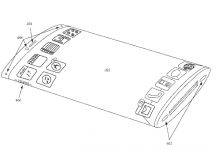 I’ve talked about PADDs before, the hand-held touch-sensitive tablet computers used in Star Trek: The Next Generation. I mentioned Jeff Kirvin’s remarks about it in regard to the Palm device that later became the Pre, and subsequently compared my new iPod Touch to the device.
I’ve talked about PADDs before, the hand-held touch-sensitive tablet computers used in Star Trek: The Next Generation. I mentioned Jeff Kirvin’s remarks about it in regard to the Palm device that later became the Pre, and subsequently compared my new iPod Touch to the device.
Now Ars Technica has interviewed production designers Michael and Denise Okuda and Doug Drexler from TNG as well as design staff from other Star Trek shows about the design process that led to their imagination of the device to which the iPad is only just catching up, 23 years later.
It is interesting to note that, like the original Enterprise’s simple pushbutton controls, the touch-sensitive design of TNG control panels and hand-held devices was born of budgetary concerns.
"We had a much lower budget than the feature films did," [Michael] Okuda told Ars. "So, for example, I looked at the production process of making a control panel, and I said, ‘How can I make this as inexpensive as possible?’ Having made those decisions, ‘now what can I do to make it as futuristic as possible?’"
The idea was that everything was a display and that the software was infinitely configurable and adaptable for ease of use. Of course, the control panels and devices in TNG didn’t really work; all the magic was added in post-production. The Okudas and Drexler expressed satisfaction and a little awe that the iPad represented the realization of that earlier vision.
In a way TNG and the iPad already share a lot of the same DNA. The graphic design for the series was done on a Macintosh, which was much easier to use than the DOS-based computers of the day.
"The very first time I saw the Apple Macintosh, it was an astonishing quantum breakthrough. Here was someone beating their brains into guacamole in order to make this machine easy for me to use," [Michael Okuda] said.
And the iPad is far from the only Trek tech to make it into the real world: flip-phones, memory cards, and USB drives all bear a lot of resemblance to things first seen “on screen”.
It’s neat to consider how ideas that were once just science fiction become reality. Of course, this isn’t as rare as one might imagine—the very ideas we like to imagine in SF become the ideas we like to design years later once the technology allows it. Star Trek is hardly alone in that respect.
For instance, just look at e-books.






























